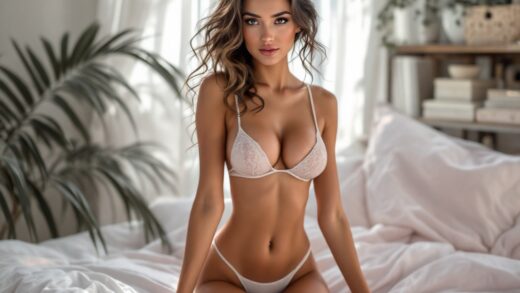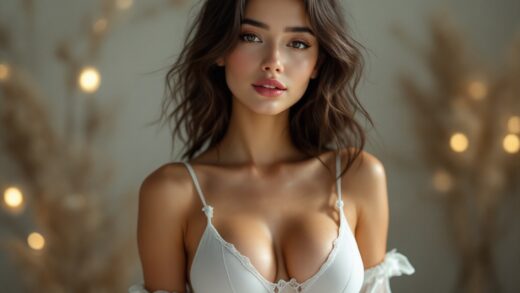The intersection of artificial intelligence and the arts has ignited a captivating discourse about the degree to which technology can mimic the intricacies of human experiences. Among various themes, sexuality has emerged as a foundational element of artistic expression across eras. From the unabashed depictions in classical art to the nuanced allusions in contemporary installations, sexuality embodies a rich tapestry of emotions, cultures, and psychological narratives. This prompts a vital question: Can Nude AI, relying on its algorithms and data-driven outputs, genuinely reinterpret or even replicate this significant dimension of human existence? As we delve into this subject, we will investigate the nuances of human sexuality in art, the function of AI in the realm of artistic creation, and the promising future of this confluence.
Art created by humans has often acted as a lens through which society’s perceptions of sexuality are examined, mirroring social conventions, prohibitions, and aspirations. For example, consider masterpieces like Sandro Botticelli’s “The Birth of Venus,” which extols beauty and longing, or Gustav Klimt’s “The Kiss,” which intertwines passion and closeness. These artworks not only portray physical connections but also stir profound emotional reactions. This emotional richness is a crucial trait that defines all extraordinary human art forms. Can AI produce pieces imbued with such layers of emotional significance? To explore this, we must first grasp the essence of human sexuality and its nuanced portrayal through art.
Grasping Human Sexuality in Art
The portrayal of sexuality in art is intricately entwined with the human journey, shaping and reflecting cultural narratives. Over time, artists have navigated this theme as a way of understanding and expressing the multifaceted dynamics of desire, eroticism, and connection. While traditional portrayals frequently highlight the physical element, they also encompass a multitude of psychological experiences linked to these topics. Art functions both as a critique and as a reflection of societal norms and individual stories related to sexuality.
- Profound emotional layers that provoke response.
- Cultural subtleties shaping representations.
- Historical importance tied to different eras and art movements.
There are countless examples, ranging from the bold sculptures of ancient Greece to the vibrant and audacious creations of the 20th century. Artists have bravely tackled societal norms, questioned accepted beliefs, and provoked discussions surrounding sexuality—whether it pertains to consent, desire, or taboo topics. These varied expressions of sexuality engage viewers, encouraging them to ponder their perceptions. This vibrant array of expression raises the question of whether AI can truly capture these complexities in its artistic works.

The Function of AI in Artistic Creation
The employment of artificial intelligence in artistic endeavors is relatively recent, but it has rapidly progressed. Leveraging generative algorithms and machine learning, AI can scrutinize thousands of artworks and styles to concoct compositions that mimic human creativity. Typically, AI is trained on extensive datasets comprising existing art, enabling it to recognize patterns and techniques seen in human-made creations. However, despite its capabilities, the comprehension of AI remains fundamentally distinct from the lived experiences of a human artist.
| Characteristic | Human Artists | AI Artists |
|---|---|---|
| Emotional Understanding | Deeply personal | Pattern recognition through algorithms |
| Cultural Context | Innate comprehension | Inferences based on data |
| Creative Purpose | Deliberate and introspective | Outputs generated through programming |
The present capabilities of AI in creating artworks of a sexual nature provoke an intriguing discussion. While AI can produce striking visuals, it frequently lacks the emotional richness and contextual narrative inherent in human art. To further understand this dynamic, we must explore if AI can truly grasp the emotional and cultural interplay essential for the depiction of sexuality.
Can AI Truly Comprehend Sexuality?
Understanding human emotions—particularly those as multifaceted as sexuality—demands more than functionality; it requires feelings, lived experiences, and nuanced interpretation. The limitations of AI become evident when we consider its inability to genuinely process or empathize with human experiences. While AI might replicate the aesthetic aspects of sexuality, it often struggles to encapsulate the cultural backdrop and emotional significance tied to those themes.
- AI’s absence of personal experiences restricts its empathetic grasp.
- Cultural subtleties may be misinterpreted through an algorithmic lens.
- Art necessitates intention and significance that AI may not fully comprehend.
As technology advances, the emotional depth that human artists contribute to their creations remains a core pillar of effective artistic expression. In contrast, AI-generated art can often feel shallow, lacking the passionate nuances and complex meanings crafted by human hands. This has sparked a thought-provoking dialogue regarding the appreciation and critique of art in the era of AI.

Illustrative Cases: AI Art in the Sexuality Sphere
Numerous noteworthy projects have delved into the crossover between AI and sexuality, producing varying reactions from the public and the art world. A prominent example is the collaboration between human artists and AI systems like OpenAI’s DALL-E. These projects frequently ignite dialogues concerning the ethics and ramifications of AI in generating erotic imagery.
- Collaborative ventures showcasing the fusion of human and AI artistry.
- Public exhibitions highlighting AI-generated erotic creations.
- Critical evaluations addressing ethical issues in AI-generated art.
Moreover, ethical dilemmas surrounding consent, representation, and the potential misuse of AI technologies cast a long shadow over this burgeoning field. As artistry and technology intertwine, it raises essential discussions about the societal ramifications of AI’s involvement in sexual art. How can artists judiciously navigate technology without breaching moral boundaries? These questions remain open for exploration as we look toward the future of sexuality in AI art.
The Future of Sexuality in AI Art
The domain of AI in erotic art is set to transform significantly in the years to come. With enhancements in machine learning and algorithmic sophistication, we might observe a shift toward increasingly tailored experiences within erotic art. The opportunities for crafting customized visual experiences introduce ethical dimensions, especially concerning the accuracy and sensitivity of representations.
This evolution also stirs considerations regarding the evolving roles of traditional artists in an automated world. Will human artists shape their creative processes around these emerging technologies, or will they resist and redefine their identities in the artistic landscape? Regardless of the path taken, it is vital to keep an ongoing dialogue regarding the implications of AI on sensitive creative territories.
Conclusion
In conclusion, the capacity of AI to embody human sexuality within art prompts a multifaceted inquiry. Although AI has demonstrated remarkable skill in generating visually striking pieces, it often falters in encapsulating the rich emotional depth tied to the narratives of human sexuality. As society increasingly integrates technology, probing into the relationship between AI and human creativity becomes essential. The potential for coexistence—and not mere competition—between AI and human artists could unlock previously uncharted realms in artistic creation. Continuous discussions around the responsible application of AI will help ensure that art continues to be a profound human expression.
FAQs
- Can AI produce emotionally resonant erotic art? While AI can generate visually captivating erotic pieces, it may lack the emotional depth that stems from human experience.
- What are notable examples of AI-generated erotic artworks? Several projects utilize AI to create erotic art, featuring collaborations between artists and AI technologies that explore the theme of sexuality.
- Is AI-generated art deemed real art? This question is subjective. Many argue that artworks created by AI lack the deliberate intention and emotional context provided by human artists.
- What ethical concerns surround AI in the realm of erotic art? Matters such as consent, representation, and the potential for misuse of AI technologies in producing explicit content are critical.
- How is AI-generated erotic art perceived by the public? The reception differs; some view it as innovative, whereas others may critique its implications on traditional artistic practices.


